There are hundreds of ecommerce platforms that online merchants can choose from. The differences between these carts can be significant, so knowing what features matter is important.
In this article, you’ll find a list ten “must-have shopping cart features” that either improve the shopping experience for the consumer or make it easier for the merchant. In truth, this probably should be a much longer list, since narrowing down shopping cart features to just ten important ones necessarily leaves out a lot of other important capabilities too. This list is also something of a matter of opinion. But at the moment, in mid-2011, these are the shopping cart features that I could not live without.
Finally, it may be helpful to quickly define “shopping cart.” In the context of this article, it is an ecommerce-specific content management system that — among other things — serves product detail pages to a shoppers’ web browsers, manages online transactions, and acts as the portal for site maintenance. Also, the terms ecommerce platform, shopping cart, and cart will all be used interchangeably.
You may also notice that features near the top of the list are relatively more important, in my view, and get a bit more ink, so to speak.
This first section of features is aimed at improving a shopper’s interaction with the site and boosting sales.
Large, Functional Product Images
Product images are among the most effective ways to communicate with customers on an ecommerce site.
“Now think about it, whenever you’re shopping online, the product image is the only opportunity you have to see that product, so if it’s not impressive from the photo, customers aren’t going to buy,” said Matt Winn, an online communications specialist with Volusion, a hosted ecommerce platform.
Although product images are essentially a standard feature on all shopping carts or ecommerce platforms, it is important to find a solution that is flexible enough to allow you or your developer to resize the images, since bigger is usually better. It is also helpful if the cart supports product image zooming.
As an example of how powerful a big, beautiful product image can be, take a look at the Victorinox site, the makers of Swiss Army knives.
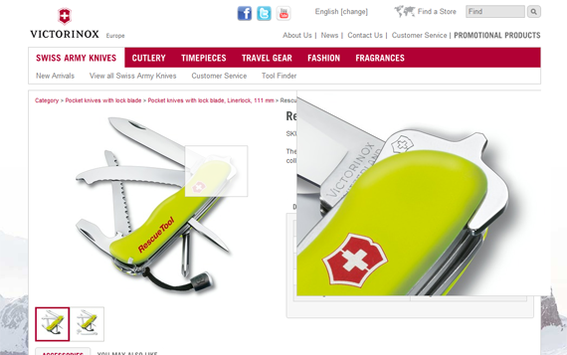
Victorinox’ product pages feature large, zoom ready images.
Sometime ago I came across a picture of the Victorinox site in an article about product photography. The picture was so compelling that I went directly to the site.
Another example comes from clothing retailer Roxy, which uses 417 by 561 pixel product images on its product pages. Shoppers may also see a larger version of the image, which is 683 by 792 pixels.
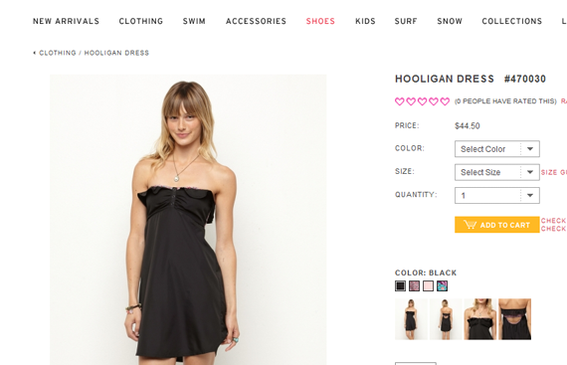
Roxy uses 417 by 561 pixel product images on its site.
Uncrate is another example of a retailer using large product images to help it sell.
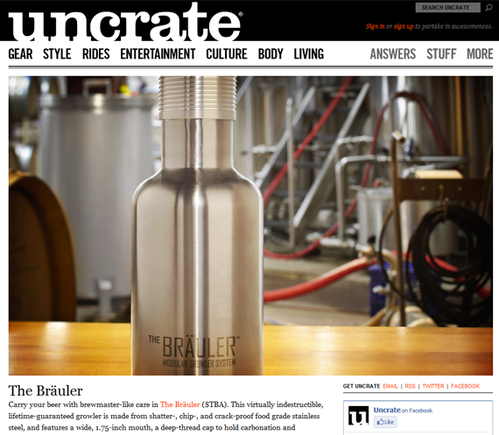
Uncrate often uses product images the full width of the page.
Product Reviews
A 2009 study from The Nielsen Company found that some 70 percent of respondents trusted “consumer opinions posted online.” While there may not be a perfect one-to-one relationship between “consumer opinions posted online” and product reviews on an ecommerce site, the study nonetheless provides some data. With this in mind, it is imperative that a shopping cart either includes support for product reviews right out of the box or has an easy way to implement third-party product reviews.
Several very successful online stores make excellent use of product reviews. For example, Newegg, the electronics retailer, frequently has more than 75 reviews for individual products. These reviews can help shoppers make good buying choices.
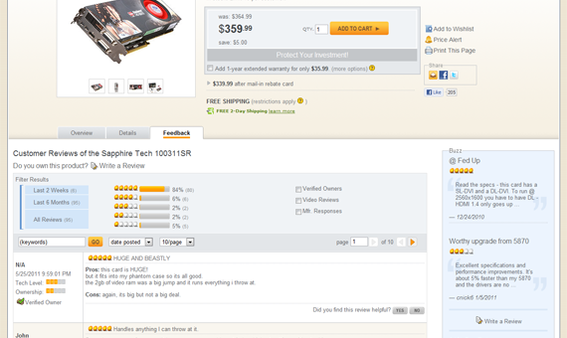
Newegg often has more than 75 individual product reviews on its product detail pages.
Layered and Faceted Navigation
Layered and faceted navigation make it much easier for shoppers to find just what they’re looking for on an ecommerce site.
This kind of navigation divides products into rational sub-categories, and displays those sub-categories as product filters. Using this kind of a system, shoppers may drill down to products based on price, color, features, or attributes. As executed in a shopping cart, this feature should be data driven and programmatic. A site administrator or owner needs only establish the business rules and the shopping cart should do the rest.
You will find examples of layered and faceted navigation on many — if not most — leading online retail sites. Zappos, the footwear retailer, makes extensive use of layers and facets on its pages. In fact, if you look at the URL for a typical Zappos product category page, you will even see references to these facets. Here’s an example:
http://www.zappos.com/search/null/filter/category/%22Swimwear%22/subCategoryFacet/
%22Swimwear+Bottoms%22/categoryFacet/%22Swimwear%22/productTypeFacet/%22Clothing%22
Notice “subCategoryFacet,” “categoryFacet,” and “productTypeFacet” in the URL above.
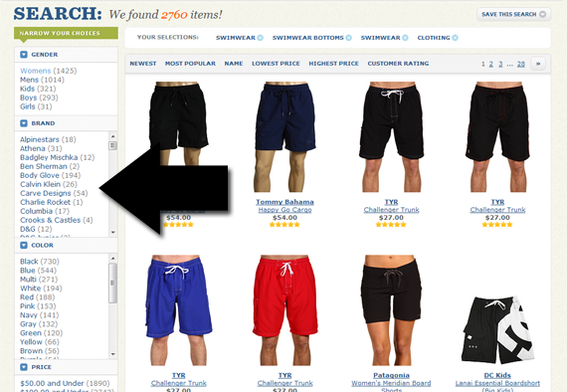
Zappos makes extensive use of facets and layers in its site navigation.
Single-Page, Fast Checkout
Actually paying for a purchase online is the last hurdle a shopper must traverse before completing an order. A shopper interested in buying wants to complete this step as quickly as possible, and a merchant should try to get out of the way.
“Just like the supermarket, online shoppers are looking for the shortest line,” Volusion said on its website.
One of the simplest methods to speeding checkout is to limit the checkout form to as few fields as possible and keep the entire form on a single page to avoid loading a new page at each stage of the checkout process.
Again according to Volusion, single page checkout “boosts sales conversions,” “reduces abandoned shopping carts,” “enhances user-friendliness”, and “streamlines customer experience.”
For examples of single-page checkouts, one can look at Kalyx, a retailer of women’s sports apparel.
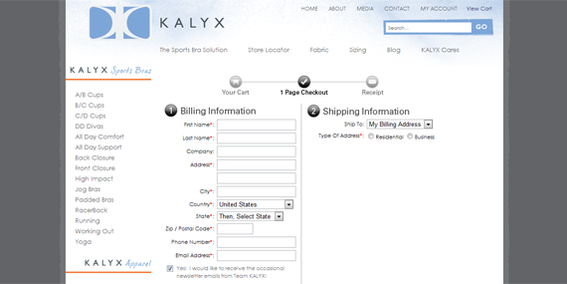
Kalyx uses a single page checkout.
Search
As surprising as it may seem, some ecommerce platforms do not support site search. So be sure that the one you select does. What’s more, make search prominent.
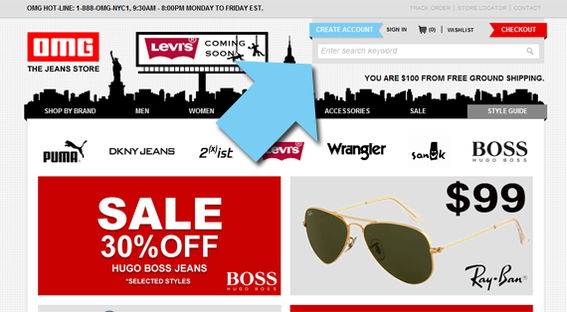
OMG Jeans has a large search form in the upper-right corner of its site.
Coupons and Discounts
It is the Groupon-age, as sites like Groupon, Living Social, Google Deals, Retail Me Not, Rimbambo, and others offer shoppers daily deals, hourly deals, and oodles of coupons. In this environment, an online merchant must be able to process coupon and discount codes, so that deal crazy shoppers can get their savings fix.
A good ecommerce platform will have couponing and discounting built in. For example, when you shop at the U.S. Olympus store, the camera retailer, you’re given an opportunity to enter discount or coupon codes as soon as you start the checkout process.
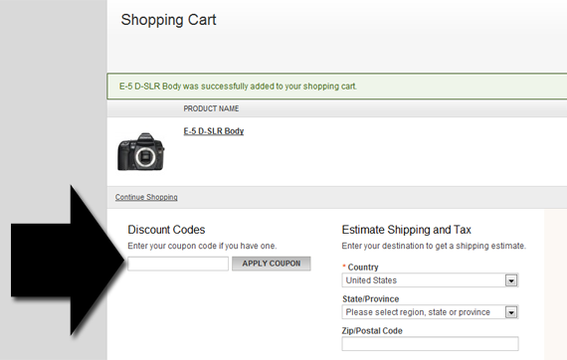
Olympus, like many retailers, gladly accepts coupon codes.
Large effective product images; product reviews; layered and faceted navigation; single-page checkout, site search, and discount and coupons codes combine for a pretty powerful user experience, but a good ecommerce platform should also take care of the merchant. Here are three more features that you must have.
Product Import and Export
The Internet is always changing and evolving. Likewise, so is ecommerce. A few years ago, it would not have occurred to me that a shopping cart should have good product import and export capabilities, but now this is a must-have feature. Whether one is exporting product data to a shopping comparison site or a Facebook store or synchronizing inventory from an online store to a physical location, the ability to easily transfer price, inventory, or product updates in to or out of a shopping cart is essential.
Look for a cart that makes this extremely simple.
Easy Integration with Third Party Solutions
There are many ways to go about building an ecommerce shopping cart, including a modular construction that allows site owners to easily add third-party solutions. For example, if you would like to use QuickBooks for accounting, there should be a simple way to connect it to your shopping cart without spending a fortune on development work. Likewise, if you would like to use MailChimp to manage your newsletter, it should be easy to integrate.
Analytics and Sales Reporting
Finally, a good shopping cart must have built-in sales reporting and analytics capabilities — even if the later comes from simple integration with Google Analytics. Be sure that you can track product sales down to a significant level of detail. Sales reports should also be easy to export.
Summing Up
There are many shopping carts and even more shopping cart features to consider, but the ten listed here are essential.




